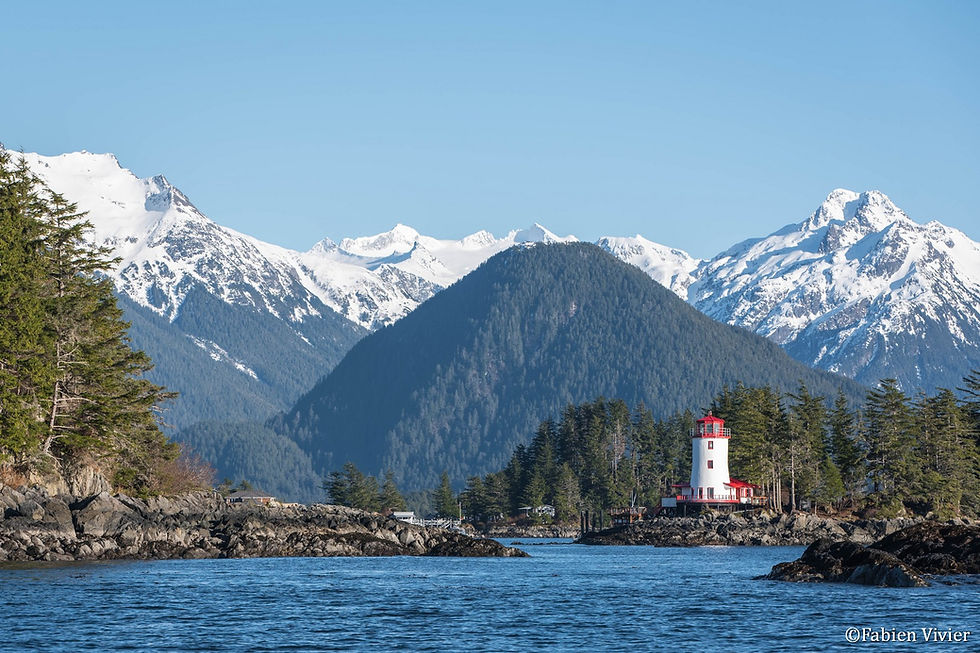Field Update: Quantifying the body condition of humpback whales in South East Alaska.
- MMRP

- Mar 21, 2019
- 2 min read
Written by Fabien Vivier
This winter, I joined Andy Szabo from the Alaska Whale Foundation in Sitka, Alaska, for two one-week field trips (in January and March 2019, respectively), to continue our collaborative project that aims to quantify the bioenergetic demands of humpback whale migration between the Alaskan feeding- and Hawaiian breeding grounds. For general background information on this research project, please visit Martin van Aswegen’s previous blog HERE.
The main goal of these two winter field trips was to collect body condition measurements of non-migrating humpback whales that overstay the winter on the Alaskan foraging grounds. While I was there, Lars Bejder and Martin were collecting similar measurements on humpback whales on the Hawaii breeding grounds together with Ultimate Whale Watch, Oceanwide Science Institute and the Applied Research Laboratory of the University of Hawaiʻi, and Stephanie Stack and Jens Currie from the Pacific Whale Foundation.

During winter, weather and light conditions are often poor in Alaska. This January was no different: we started the field season with a blizzard, which slowly cleared out over the week to make place for blue skies and calm waters. Unfortunately, the whales were not very cooperative and spent little time at the surface, with unpredictable swimming/surfacing patterns, which made it difficult to track them and to collect morphometric measurements with our Unoccupied Aerial System (UAS or drone). Despite the difficulties, we encountered and successfully sampled some animals, of which one was re-sighted every day.

In March, the weather conditions were much more favorable (calm waters, clear skies, and 10 hours of workable sunlight per day), and fortunately, whales were present in solid numbers in Sitka Sound. Most of the whales (and Steller sea lions) we encountered displayed foraging behaviors. Over five days, we successfully collected measurements of 30 individual whales.

During this field expedition, we were joined by Kelly Cates, a PhD candidate at the University of Alaska Fairbanks. Kelly’s project focuses on humpback whale health indices, such as steroid hormones extracted from blubber. For this aspect, in collaboration with Alaska Whale Foundation and the Marine Mammal Research Program, we successfully collected both biopsy samples and morphometric measurements of 10 individuals. Linking hormone analysis with aerial photogrammetry will help us better assessing the health and reproductive biology of these animals.
Something unusual
During our March field-trip we came across a female humpback whale that was tail-slapping repeatedly. While this behavior is common for humpback whales, we quickly noticed something unusual (see video). The animal seemed to be bleeding from what appears to be the genital area while tail slapping on its ventral position (see video). However, we are not sure whether the red coloration represents blood, fecal matter or a mixture of the two. Was the animal engaged in a high-energy defecating behavior or was the animal bleeding? What could have been the cause? We have contacted colleagues and together we are working on an explanation to what could have happened.

We are now preparing for our last winter field trip of the year to Alaska (early April) during which we will be conducting similar sampling, before commencing a five month summer season in May.

All research activities were conducted in accordance with NMFS ESA/MMPA Permit No. 19703.
If you have any questions about this project please contact:
Lars Bejder: lbejder@hawaii.edu
AWF: info@alaskawhalefoundation.org




Comments